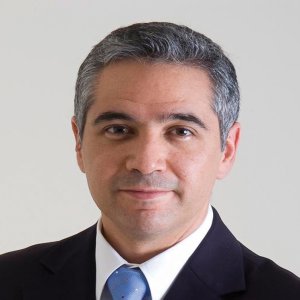Government and Academia Links Needed for Economic Development
STORY INLINE POST
In 1973, as the maquiladora industry in Chihuahua was in full swing, the state’s private investors sought to have their own organization through which to help attract foreign investment alongside the government. This led to the creation of DESEC (Economic Development of the State of Chihuahua). Given its roots in the private sector, DESEC sought to increase the state’s competitiveness in two major ways: selling the merits of Chihuahua to potential foreign investors and ensuring better collaboration between industries, the government and universities. “The broadening of Chihuahua’s economic horizons was accompanied by a growth in the complexity of the manufacturing being done in the state,” explains DESEC’s President, Alberto Terrazas Seyffert.
Ciudad Juarez and the city of Chihuahua became early assembly centers for the American automotive industry, but they have now grown to be automotive industry players in their right. Companies like Superior Industries and TRW manufacture wheels and auto parts in the state, but Chihuahua’s automotive crown jewel is Ford’s largest engine plant in Latin America. Since opening its doors in 1983, the Ford plant has undergone three expansions, evidence of the value it has found in Chihuahua. Terrazas Seyffert explains that securing Ford’s investment was one of the early feathers in DESEC’s cap. “The private sector and DESEC were heavily involved, holding a series of meetings with Ford to help it negotiate with the government. The authorities set their incentives but when a company sees it will have support from the private sector in a given location, this will go a long way toward making an investment happen. That is the role DESEC played when Ford came here,” he says. Today, DESEC still meets with investors to explain the advantages of investing in Chihuahua. In the 1990s, DESEC played a larger role in the promotion of Chihuahua abroad, sending teams to international fairs and exhibitions to put on a united front with the public sector. Changes in government have periodically altered DESEC’s focus over the years, but it remains focused on certain major goals, such as attracting an OEM to Chihuahua.
While DESEC runs its own programs, one of its foundations is to collaborate with the government and academic institutions. As such, the success of its programs depends on their willingness to participate. Terrazas Seyffert examines this phenomenon by saying that in the 1990s, DESEC had a successful program called Chihuahua Siglo XXI (21st Century Chihuahua) that sought to arrange overseas promotion for the state. Upon a change in authorities, Chihuahua Siglo XXI fell by the wayside. A new body was created under the name of CODEC (Council for the Economic Development
of Chihuahua) and was divided across twelve regions in the state. While it might seem this added unnecessary levels of bureaucracy, Terrazas Seyffert says these twelve different boards, comprised of municipal governments, private sector and university members, are better able to represent the priorities of different regions. “These boards are beginning to move in the same direction as Siglo XXI did. Each of these regions has different activities and priorities, the city of Chihuahua cannot decide what the priorities of Casas Grandes or Cuauhtemoc should be. The private sector understands very well how to combine the advantages of each region of Chihuahua to create an overarching strategy. The government needs to create a long-term plan that is led by the private sector and universities as these do not change every six years,” he explains.
Within this new structure, DESEC retains its role as a facilitator, as it has in the creation of the automotive cluster. Terrazas Seyffert says that DESEC used its international links to bring people from different sectors to make sure the Chihuahua automotive cluster could truly cater to the needs of the industry. The clusterization process itself represented a challenge for which DESEC brought in Spanish experts who had set up similar clusters before. Although the cluster is independent of DESEC, it relies on the contributions of industry, government and academia to function. As such, DESEC has fostered links between these pillars for mutual benefit. For example, Ford has reached out through the cluster to universities in Chihuahua to better train engineers that fit Ford’s requirements upon graduation and can therefore better find jobs within the giant’s operations. Terrazas Seyffert says the creation of the cluster was a necessary step to bolster Chihuahua’s competitive advantages for automotive business. Although the state received the largest automotive investment of any Mexican state over the last decade, it is facing more competition than ever before. “Chihuahua neighbors the largest market in the world but we sometimes try to reach other markets that would improve our competitive advantages. It is important to broaden our markets but we have to remain focused on the US for the moment. The automotive industry in Chihuahua has been focused on exports since the late 1970s, this has led to us having a tremendous wealth of expertise to draw on,” says Terrazas Seyffert. This wealth of expertise cannot distract from one important fact, outside of the Ford engine plant, Chihuahua is home to no OEMs.
DESEC responds to this reality by recommending that Chihuahua blaze a trail in a different direction. Terrazas Seyffert indicates that automotive companies are primarily manufacturing hybrid and electric cars for the East Coast and West Coast markets in the US. “Those companies are not going to start selling electric cars around the world, they will sell to specific markets. If we see an OEM that is focusing on the US market for electric vehicles, and if Chihuahua can develop the right supplier base, we will be able to make a good argument for such an OEM to be based here. Tesla would be a good example of such an OEM.”




















